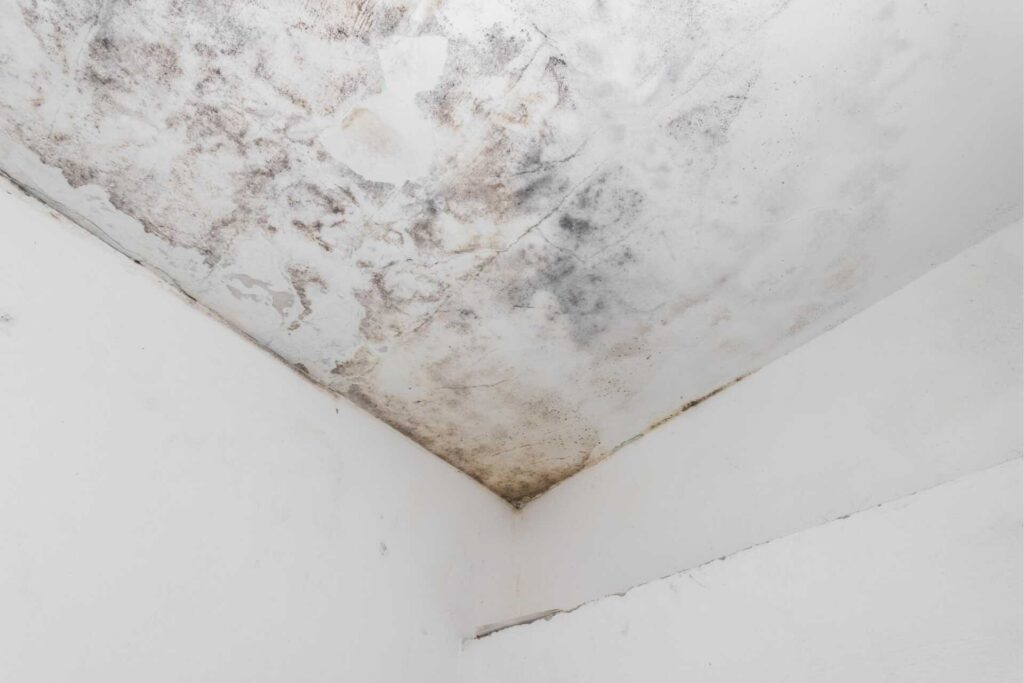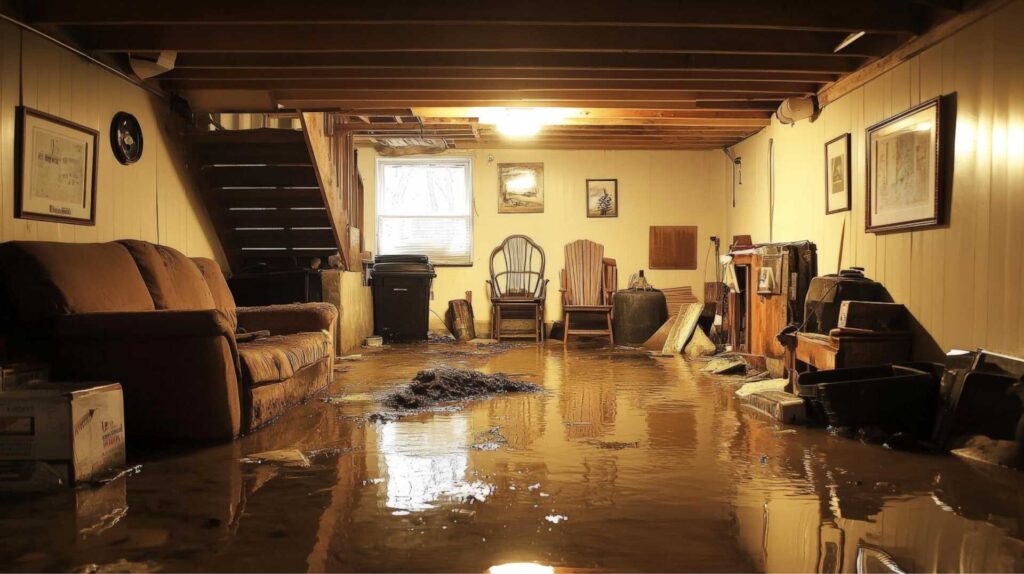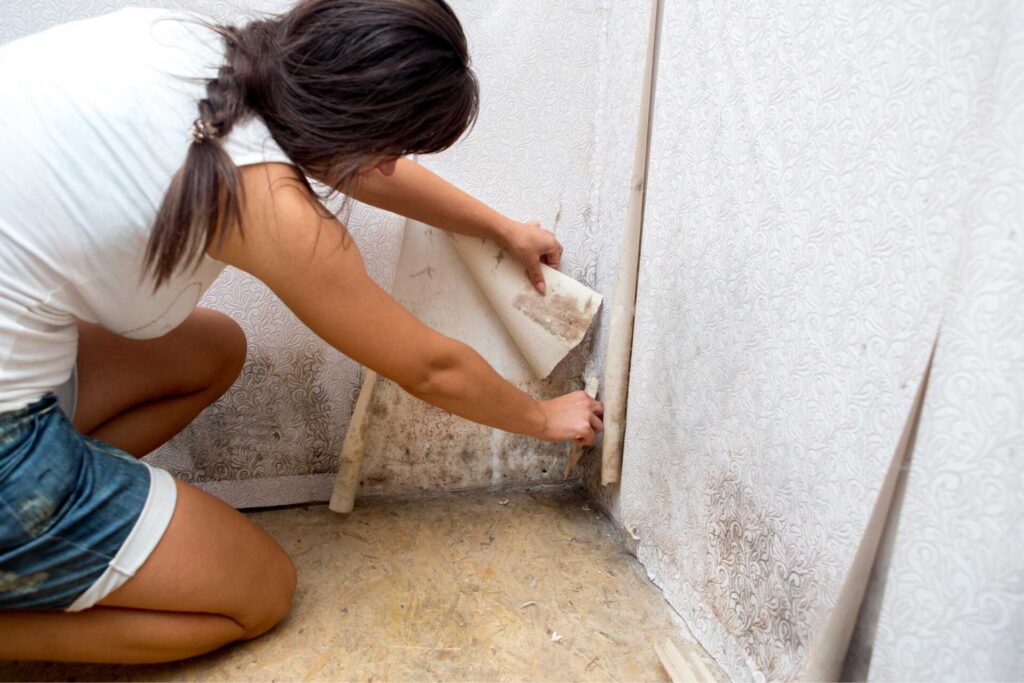
Contents
Dealing with unwanted mold growth can be quite a nuisance. To tackle this issue effectively, you need to focus on a systematic approach. Start by evaluating the affected areas and gathering the right supplies. It’s crucial to prepare your space properly before applying any cleaning solutions. Understanding the correct methods can greatly influence your success in mold removal, so consider what comes next in this process.
Key Takeaways
- Identify and assess the extent of black mold growth on all surfaces, including hidden areas like behind appliances and inside cabinets.
- Gather protective gear (N95 mask, gloves, goggles) and non-toxic cleaning solutions for safe mold removal.
- Prepare the affected space by clearing furniture, ensuring ventilation, and sealing off the area with plastic sheeting.
- Use a bleach solution for non-porous surfaces or a vinegar solution for porous materials to effectively clean mold.
- Prevent future growth by maintaining humidity below 60%, sealing leaks, and using dehumidifiers in damp areas.
Assessing the Affected Area
Before you begin any mold removal efforts, it’s vital to assess the affected area thoroughly.
Start by identifying the extent of the mold growth, looking for visible signs on walls, ceilings, and floors. Don’t forget to check hidden spaces like behind appliances or inside cabinets. Use a flashlight to illuminate dark corners. Pay attention to any musty odors, as they often indicate deeper infestations.
Next, evaluate the moisture source. Identify leaks or areas with high humidity that could be contributing to the mold problem.
Remember, simply removing mold without addressing the underlying moisture will likely lead to recurrence.
Lastly, take note of any materials affected, such as drywall or wood, as they may need replacement. Document your findings, as this information will be significant for planning your removal process effectively.
Gathering Necessary Supplies
Gathering the right supplies is essential for effective mold removal. You’ll want to make sure you have everything on hand before you start the process. Here’s a concise list to help you prepare:
| Supply | Purpose | Notes |
|---|---|---|
| Protective Gear | Safeguards against spores | N95 mask, gloves, goggles |
| Mold Cleaner | Kills mold and spores | Choose a non-toxic option |
| Scrubbing Brush | Removes mold from surfaces | Stiff bristles recommended |
| Spray Bottle | Applies cleaner efficiently | Reusable for future use |
| Bucket | Holds water/cleaning solution | Essential for rinsing |
Having these supplies ready will not only streamline your efforts but also enhance your safety. Remember, being well-prepared fosters a sense of community and shared responsibility in tackling mold issues effectively.
Preparing the Space for Mold Removal
Once you’ve gathered your supplies, it’s time to prepare the space for mold removal.
Begin by clearing the area of any furniture, decor, or personal items. This helps prevent cross-contamination and gives you ample room to work. Verify the room is well-ventilated by opening windows and doors; this reduces airborne spores and improves air quality.
Next, put on your protective gear—gloves, goggles, and a mask—to safeguard yourself from exposure.
Seal off the area with plastic sheeting to contain spores; tape the edges securely to prevent leaks. If possible, turn off your HVAC system to avoid spreading mold throughout your home.
Finally, inspect the area for any hidden mold growth, like behind walls or under carpets.
Applying Effective Cleaning Solutions
As you begin applying effective cleaning solutions, it’s crucial to select the right product for the type of surface affected by black mold. For non-porous surfaces like tiles or glass, a mixture of water and bleach (one cup of bleach to one gallon of water) is effective.
Be cautious, though; always wear gloves and a mask to protect yourself from harmful fumes. For porous surfaces, such as drywall or wood, consider using a vinegar solution (equal parts vinegar and water), as it penetrates better without damaging the material.
Before applying, test your solution on a small, inconspicuous area to verify it won’t cause discoloration. Use a scrub brush or sponge to apply the solution, scrubbing vigorously to remove all mold.
After cleaning, rinse the area with water and dry it thoroughly to prevent future mold growth. Following these steps will help you reclaim your space effectively and safely.
Ensuring Proper Ventilation
Ensuring proper ventilation is essential when tackling black mold removal, as it helps reduce moisture and improve air quality.
Without adequate airflow, the chances of mold returning increase considerably. Here are some effective ways to enhance ventilation in your space:
Open windows to allow fresh air to circulate, especially during cleaning.
Use exhaust fans in bathrooms and kitchens to expel humid air outside.
Install dehumidifiers to maintain ideal humidity levels, ideally below 50%.
Keep doors open between rooms to promote cross-ventilation.
Preventing Future Mold Growth
To prevent future mold growth, you need to control humidity levels in your home.
Keeping humidity below 60% will greatly reduce mold spores’ chances of thriving.
Additionally, improving air circulation guarantees that moisture doesn’t accumulate in hidden areas where mold can develop.
Control Humidity Levels
Controlling humidity levels is essential for preventing future mold growth, especially in areas prone to dampness. To maintain ideal humidity, aim for levels between 30% and 50%.
Here are some practical tips to help you manage humidity effectively:
- Use dehumidifiers in basements or bathrooms to reduce moisture.
- Seal leaks in windows, doors, and pipes to prevent water intrusion.
- Ventilate areas like kitchens and bathrooms by using exhaust fans.
- Monitor humidity levels regularly with a hygrometer to stay informed.
Improve Air Circulation
While managing humidity is essential, improving air circulation plays an important role in preventing future mold growth. Proper airflow reduces moisture accumulation, creating an environment less conducive to mold. You can enhance air circulation by strategically placing fans, opening windows, and using exhaust fans in kitchens and bathrooms.
Here’s a simple breakdown of effective methods:
| Method | Description |
|---|---|
| Use Ceiling Fans | Circulate air throughout the room. |
| Open Windows | Encourage fresh air flow when weather permits. |
| Install Ventilation | Add vents in areas prone to moisture. |
Summary
In the battle against black mold, think of yourself as a gardener tending to a wilting plant. By evaluating your space, gathering tools, and nurturing the environment, you’re not just removing mold; you’re fostering a healthier home. Apply your chosen solutions with care, ensuring the air circulates freely, just as sunlight nourishes roots. With diligence, you’ll keep moisture at bay, allowing your home to thrive—free from the shadows of mold, much like a flourishing garden basking in the light.

